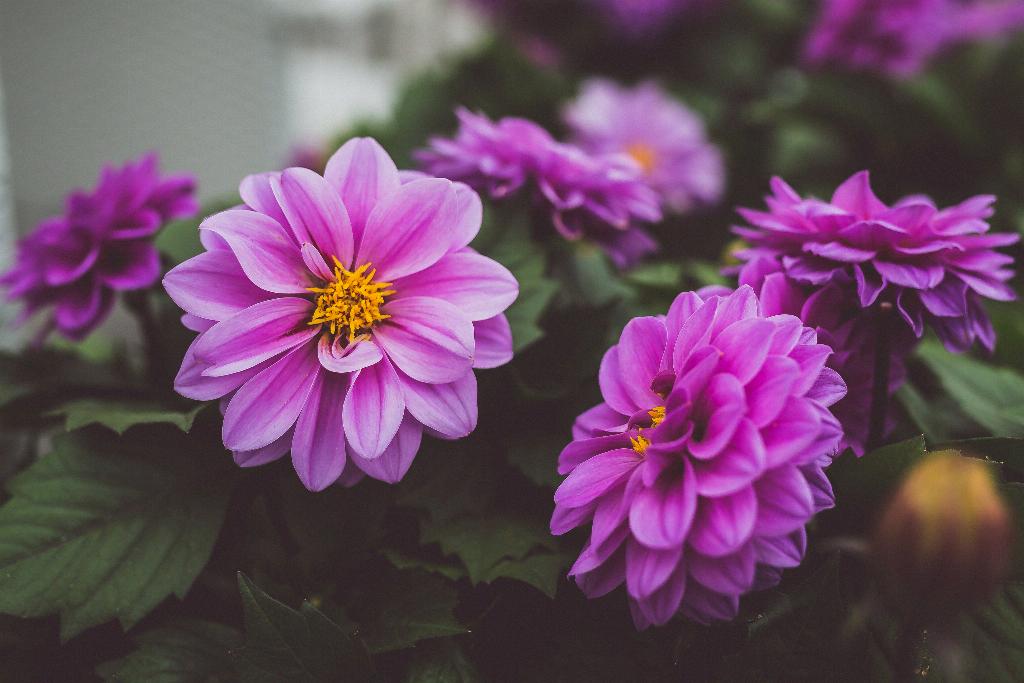Growing dahlias from seeds can be a rewarding and vibrant addition to any garden enthusiast’s palette. Dahlias, known for their stunning blooms and array of colors, can actually be grown from seeds, offering a cost-effective and gratifying way to cultivate these floral beauties. By starting dahlias from seeds, you not only get to witness the whole cycle of life, but you also have access to a broader variety of species and hybrids that might not be readily available in plant form. So, if you’re ready to dive into the world of dahlias and turn your garden into a riot of color, growing from seeds is a wonderful route to explore.
Choosing the Right Dahlia Seeds for Your Garden
When it comes to selecting dahlia seeds, the diversity can be both exhilarating and a bit daunting. The key is to choose varieties that will align well with your local climate and soil conditions, but also tickle your fancy in terms of color and bloom shape. There are numerous species and cultivars available, ranging from the stark dramatics of dark-leaved dahlias to the whimsical patterns of cactus dahlias. Envision how the different types will fit into your garden’s palette and choose the seeds that best suit your aesthetic and gardening conditions. Often, purchasing dahlia seeds online offers a wider selection, allowing you to cherry-pick from top varieties that cater to your personal preferences and gardening needs.
Step-by-Step Guide to Planting Dahlia Seeds
Planting dahlia seeds isn’t rocket science, but following a few key steps will increase your success rate significantly. Start by sowing seeds in well-draining, fertile soil in seed trays or pots. The best time to start is indoors, about 6-8 weeks before the last expected frost. Cover the seeds lightly with soil and water gently. Keep the soil moist but not waterlogged, and ensure the emerging seedlings get plenty of light. As they grow, be vigilant in maintaining the proper conditions, and you’ll be transferring robust seedlings to your garden in no time.
Optimal Soil Conditions for Dahlia Seed Growth
Ideally, dahlias thrive in rich, well-drained soil with a pH level around 6.5. Before planting your seeds, improve your garden soil by mixing in compost or manure to boost nutrient levels. Good soil not only supports healthy root growth but also enhances the overall vigour of the plants, leading to spectacular blooms. If your soil is particularly clay-heavy or sandy, amend it accordingly to achieve the texture and fertility dahlias crave for optimum growth.
Watering and Feeding Your Sprouting Dahlias
Young dahlia plants are thirsty and will benefit from regular, consistent watering. The goal is to keep the soil moist, especially during dry spells, but be wary of overwatering as this can lead to root rot. As far as feeding goes, a low-nitrogen, high-potassium fertilizer will work wonders. Starting fertilization about six weeks after planting will keep them vigorous and encourage bolder, brighter blooms as the plants mature.
Managing Sunlight and Temperature for Healthy Dahlias
Dahlias adore the sunshine but don’t particularly love high heat. A spot that receives at least 6 hours of direct sunlight daily is ideal. However, in hotter regions, light afternoon shade will help protect the plants from midday heat stress. Temperature-wise, dahlias grow best in moderate conditions; severe cold or frost can halt growth or even kill young plants, so consider your timing when planting out your seedlings.
Common Pests and Diseases Affecting Dahlia Seedlings
While dahlias are fairly robust, they’re not immune to pests and diseases. Slugs and snails can be a real bother, nibbling away at tender young shoots. Insect pests like aphids and spider mites also pose a threat by sucking on the plant sap. As for diseases, watch out for fungal infections such as powdery mildew and botrytis, especially in damp conditions. Regular monitoring and early intervention with environmentally friendly treatments can prevent these issues from taking hold.
When and How to Transplant Dahlia Seedlings
Once your dahlia seedlings have grown several sets of leaves and are sturdy enough, it’s transplant time! This is usually a few weeks post the last frost when the soil is warm. Carefully lift each seedling, keeping as much root and soil intact as possible, and plant them in prepared holes that accommodate their root ball comfortably. Space them according to the expected size at maturity to avoid overcrowding and to promote airflow.
Tips for Encouraging Full, Lush Blooms from Dahlia Seeds
To coax the fullest, most spectacular blooms out of your dahlias, regular deadheading and pinching back is essential. This encourages more blooms and a bushier growth habit. Additionally, support your taller dahlia varieties with stakes or cages to help them cope with the wind and rain. Remember, the healthier your plants, the more impressive their blooms will be, so keep up with watering, feeding, and grooming routines.

Harvesting and Storing Dahlia Seeds for Next Season
As your dahlias wind down for the season, it’s time to think about next year. Allow some of your healthiest flowers to go to seed and carefully harvest them once they’ve dried on the plant. Store the seeds in a cool, dry place over winter, and you’ll have a personal seed bank ready for another round of planting when spring rolls around. This not only saves money but also lets you gradually create a garden uniquely tailored to your preferences and conditions over the years.
